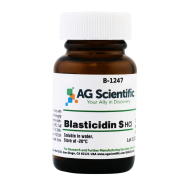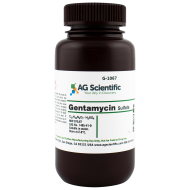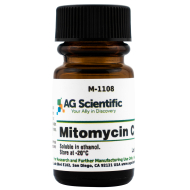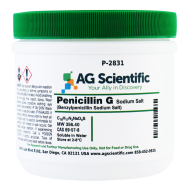Antibiotics have prevented millions of deaths and radically changed healthcare during the last century. There are dozens of different types of antibiotics, with each of them grouped into different classes. The following list includes eight of the most common classes of antibiotics, what they are generally used for and some of the potential side effects.
1. Penicillins
Alexander Fleming discovered in 1928 that mold derived from penicillin stopped the growth of bacteria. There are now over a dozen types of penicillins that can treat a wide variety of bacterial infections. A few include amoxicillin, ampicillin, piperacillin, and penicillin G. There are also subgroups of penicillins such as carbenicillin. Carbenicillins are effective against certain urinary tract infections. Penicillin is the most widely prescribed of all antibiotics, usually in the form of amoxicillin. It is also considered one of the strongest. It is usually the first choice for those suffering from infections such as pneumonia, tonsillitis and dental abscesses. Other common bacterial infections treated with penicillins include strep throat and urinary tract infections.General side effects can include nausea, diarrhea, fever and skin rashes. It's important to note that penicillins may interfere with the effectiveness of birth control pills. Some individuals exhibit a severe allergic reaction to penicillin known as anaphylaxis. Anaphylaxis is a potentially life-threatening condition that causes dysfunction in several body systems.
Popular Penicillin Antibiotics:
| SKU | Product Name |
| A-2751 | Amoxicillin Trihydrate |
| A-1414 | Ampicillin, Sodium Salt |
| C-1385 | Carbenicillin Disodium Salt |
| P-2863 | Piperacillin, Sodium Salt |
| P-2831 | Penicillin G Sodium Salt |
2. Cephalosporins
Cephalosporins were first discovered and isolated in 1945. These types of antibiotics are usually grouped into categories that are called generations. There are five generations of cephalosporins. The first generation of these antibiotics is usually used for infections that are easier to treat. The latter generations are for more serious bacterial infections.
Side effects are similar to those experienced with penicillin. These include nausea, diarrhea, rash and thrush. If someone is allergic to penicillins it is likely they will be allergic to cephalosporins since they are similar in molecular structure. Depending on how severe the allergy is, some individuals may be able to still take third, fourth or fifth generation cephalosporins.
Popular Cephalosporin Antibiotics:
| SKU | Product Name |
| C-2749 | Cephalexin Monohydrate |
| C-2741 | Ceftriaxone |
| C-2735 | Cefazolin Sodium Salt |
| C-2743 | Cefuroxime Sodium Salt |
3. Sulfonamides
Sulfonamides were initially developed as early as 1906 but were not used for antimicrobial purposes until the 1930s. There are several specific brands of sulfonamides in the United States and Canada. A few brands in this class include Sulfazine and Azulfudine. These antibiotics are used for general bacterial infections such as bronchitis and bladder infections. They are also used for less common conditions such as malaria and rheumatic fever.
4. Fluoroquinolones
Fluoroquinolones are divided based on pharmacology and their antimicrobial spectrum. The older group of fluoroquinolone antibiotics includes ofloxacin, norfloxacin and ciprofloxacin. The newer group includes moxifloxacin, levofloxacin, delafloxacin and gemifloxacin. Fluoroquinolones work by destroying the DNA replication in bacteria. Several new antibiotics in this class were removed and taken off the US market due to toxicity. Some of these included grepafloxacin that contributed to cardiac toxicity and temafloxacin associated with acute renal failure.It is generally recommended to use these antibiotics only after other courses of treatment have failed. Fluroquinolones have also been linked in recent years to mental health problems, disturbances with blood sugar and specifically aortic aneurysms. Within the last year the FDA has required labeling changes to strengthen the warnings. There may be some cases, however, such as when treating bacterial pneumonia, that the potential benefits outweigh the risks. Serious cases of pneumonia and abdominal infections may require the use of fluoroquinolones.
5. Macrolides
These antibiotics were discovered during the 1950s. They are usually given as oral medication. Macrolides are often used to treat very basic bacterial infections. Specific drugs in this class include roxithromycin, clarithromycin, azithromycin and erythromycin. These antibiotics are often used for specific types of pneumonia, chlamydia and urethritis. Macrolides are sometimes prescribed to prevent a bacterial infection. If an individual has had their spleen removed or suffers from sickle-cell disease the person may need to use one of these antibiotics on a regular basis to prevent an infection.Minor side effects can include nausea, diarrhea and ringing in the ears. Macrolides are often a good alternative for individuals that are allergic to penicillins or cephalosporins. However, potential complications regarding these antibiotics are that they do have some drug interaction concerns that could lead to serious heart complications.
Popular Macrolide Antibiotics:
| SKU | Product Name |
| R-2611 | Roxithromycin |
| C-2645 | Clarithromycin |
| A-2667 | Azithromycin |
| E-2463 | Erythromycin |
6. Tetracyclines
Tetracyclines were discovered in 1945 and first prescribed in 1948. In 1953, the drug was patented but wasn't used commercially until 1978. They are taken orally and have been used for a wide variety of medical conditions including acne and in combination with other medication for stomach ulcers. While many of these antibiotics have similar side effects to those in other classes, tetracyclines may also inhibit appetite.These antibiotics may also contribute to tooth development problems if used by young children. The most common side effects may include nausea, diarrhea, swollen tongue, troubling swallowing and soreness or swelling in the genital area. A rare but potential serious side effect is possible blindness due to intracranial hypertension.
7. Aminoglycosides
Aminoglycosides consist of amino groups which are connected to glycosides. In 1943, streptomycin (the first aminoglycoside) was discovered. These antibiotics, unlike most others, are usually administered intramuscularly or intravenously in a clinical setting. Aminoglycosides are often prescribed for serious Gram-negative infections. They kill bacteria directly and are often used for conditions that are difficult to treat. A few types of Aminoglycosides can be taken as ear drops, eye drops or orally.8. Carbapenems
These antibiotics were introduced in the 1980s. They are a class of antibiotics also known as beta lactam. They work by inhibiting synthesis of the bacterial cell wall. Carbapenems are often used for serious urinary infections, abdominal infections, blood infections and pneumonia.
General side effects include nausea, diarrhea and headache.
Popular Carbapenem Antibiotics:
| SKU | Product Name |
| E-2497 | Ertapenem Sodium Salt |
| M-2695 | Meropenem Trihydrate |
Because there are so many different classes of antibiotics with many similarities, it's important to have the resources on hand to choose the correct component for your research or application. At AG Scientific, we have over 20 years of experience in the life science industry supplying critical chemical reagents for breakthrough research. Contact our team to find the highest quality reagents, industry-best pricing, and unrivaled customer service.
Additional Reading:
- Polyene Macrolide Antibiotics
- The CRISPR Cas9 System: A War Against Antibiotic Resistance
- Drug Resistant Pathogens: A Growing Problem
- What Can Be Done to Fight Antibiotic Resistance?












